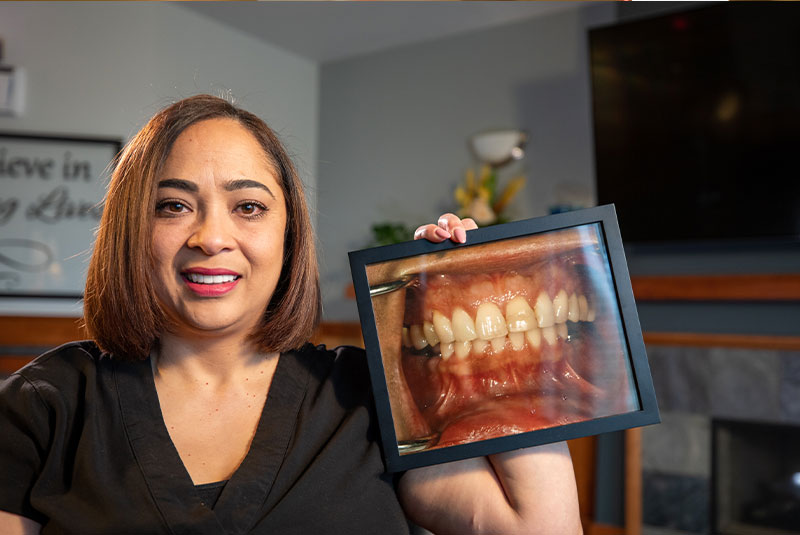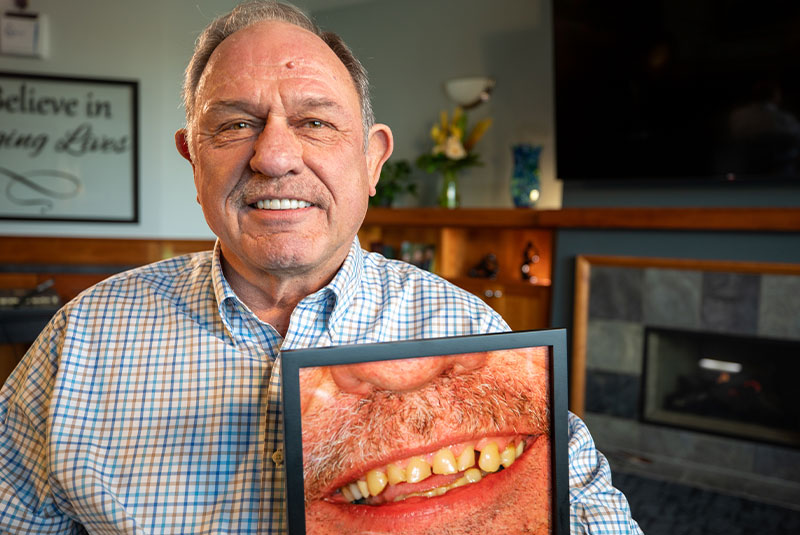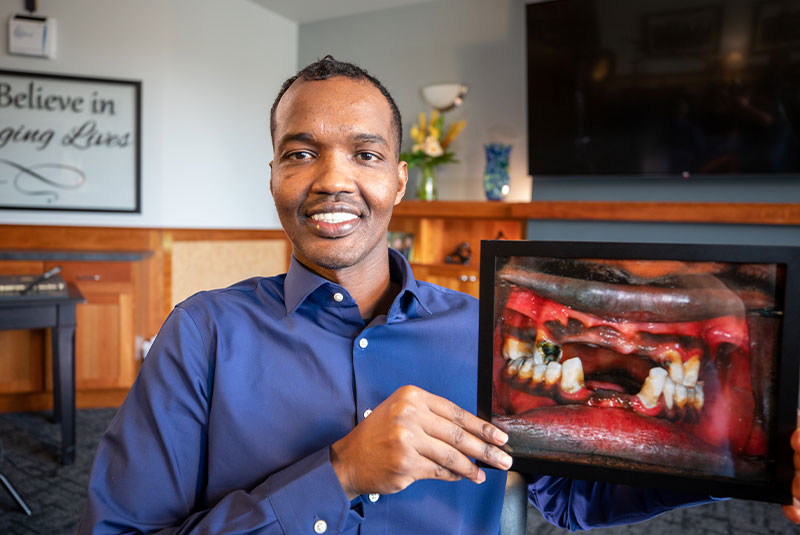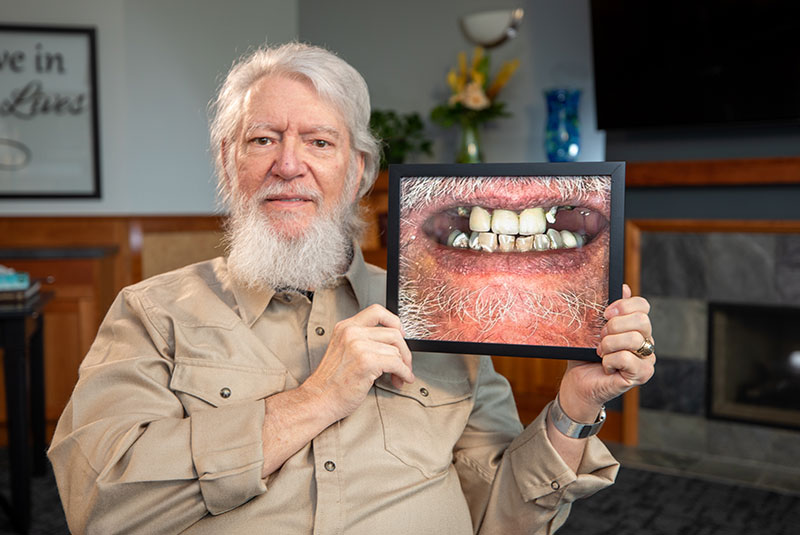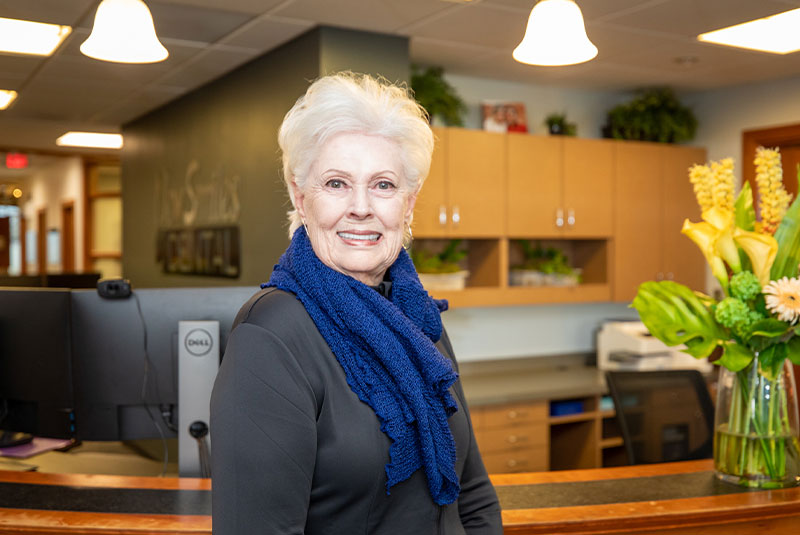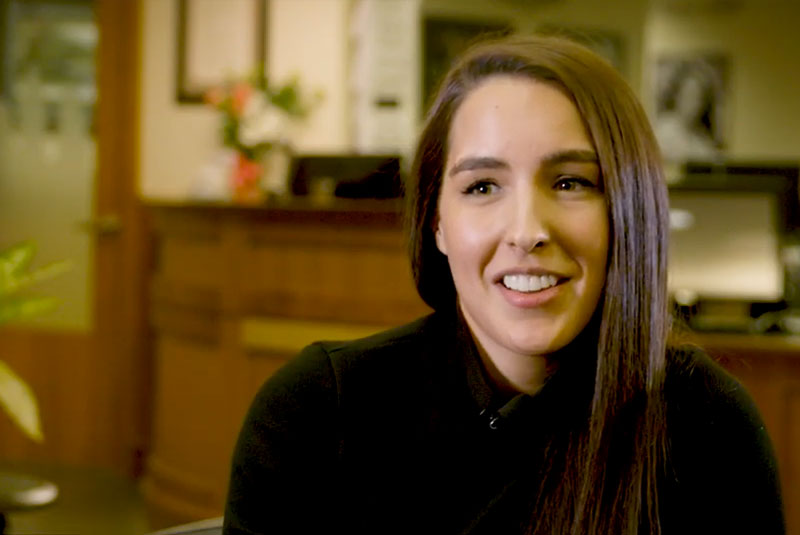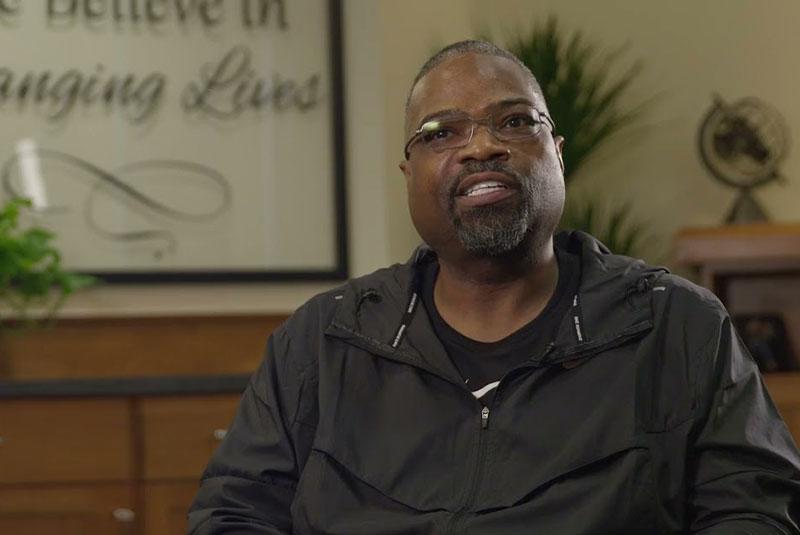If you’re wondering how is a dental implant done, here’s a plain-language walkthrough. A dental implant replaces a missing tooth with a titanium post anchored in the jaw, an abutment, and a final crown or prosthesis. This guide explains each phase — planning, surgery, healing, and the final restoration — so you know what to expect and what decisions come next.
This post also answers common questions and shows when the timeline changes. If you’re searching for how is a dental implant done in Sherwood, OR, this step-by-step guide reflects the technology and care available at New Smiles Dental.
What a dental implant is
A dental implant has three main parts:
- Fixture/implant: a titanium (or titanium alloy) screw placed in the jawbone that acts like a tooth root.
- Abutment: a connector that attaches to the implant and holds the crown or prosthesis.
- Crown/prosthesis: the visible tooth or full-arch bridge that looks and functions like natural teeth.
Implants replace missing teeth by integrating with bone (osseointegration). They differ from bridges and dentures because implants preserve bone, act like natural roots, and usually last longer with better chewing function and appearance.
How is a dental implant done: Step-by-step
Initial consultation and digital planning
The process starts with a medical and dental history, an exam, and 3D imaging (CBCT). Digital scans and photos let the team plan implant size and position before surgery. If you’re asking how is a dental implant done in Sherwood, OR, this planning step uses CBCT and digital scans to reduce surprises and speed treatment.
Preparing for surgery
Before surgery you’ll get pre-op instructions (fasting if using IV sedation, meds to stop or take). Sedation choices range from local anesthesia to IV sedation for comfort. New Smiles Dental uses surgical guides printed in-office for precise placement.
Surgical placement of the implant
During surgery the dentist makes a small incision (or uses a flapless approach) and drills a controlled pathway for the implant. The implant is inserted into the bone using a guided drilling protocol to ensure exact depth and angle. Guided surgery reduces time and improves accuracy.
Bone grafting or sinus lift, if needed
If there isn’t enough bone, a graft or sinus lift may be done before or at the time of implant placement. Grafts use your bone or a grafting material to build volume. This adds healing time — typically a few months — before the implant can be loaded.
Immediate load vs. traditional healing
Some patients get a same-day temporary tooth (immediate load) if primary stability is strong. Others wait for osseointegration (2–6 months) before the final restoration. Your anatomy and bone quality determine which route is safest.
Abutment, impressions, and final restoration
Once the implant integrates, the abutment is attached and digital impressions are taken (CEREC, iTero, or photogrammetry). The final crown, bridge, or full-arch prosthesis is milled or printed, then fitted and adjusted for comfort and bite.
Recovery and follow-up care
Expect mild swelling and soreness for a few days; pain is usually controllable with prescribed or OTC meds. Soft foods for a week are common. Follow-up visits confirm healing and implant health, with routine checkups every 3–6 months early on and annually after that.
Who is a candidate and what can change the plan
Ideal candidates are healthy adults with adequate bone and good gum health. Common factors that change the plan:
- Poor bone volume — may need grafting.
- Active gum disease — must be treated first.
- Systemic conditions (uncontrolled diabetes, immune issues) — require medical clearance.
- Smoking — increases failure risk; quitting improves outcomes.
Extractions, sinus lifts, or staged grafting extend the timeline and increase cost, but they often make implants possible where they wouldn’t be otherwise.
Benefits, risks, and success rates
Benefits:
- Restored chewing and speech
- Bone preservation and facial support
- Long-term durability and natural appearance
Risks and common complications include infection, nerve irritation, implant failure, or sinus issues. Overall success rates for implants are high — commonly 95% or greater at 5–10 years when placed and cared for properly.
Tips to improve success: maintain excellent oral hygiene, attend regular dental visits, follow post-op instructions, and avoid smoking.
Why choose New Smiles Dental in Sherwood for implants
New Smiles Dental in Sherwood delivers care led by board-certified implant dentists Dr. Nathan Doyel and Dr. Ben Aanderud. The team focuses on patient comfort, precision, and same-day solutions when clinically appropriate.
Key technology and same-day capabilities:
- CBCT 3D imaging for precise planning
- CEREC (PrimeScan x3) and iTero digital impressions
- In-house 3D printers and surgical guides
- Zirconia mills and CAD/CAM for fast, esthetic crowns
- Photogrammetry for ultra-precise full-arch fittings
- IV sedation support and CO₂ laser for minimally invasive care
Common FAQs & next steps
How long does the procedure take and when can I chew normally?
Individual implant surgery often takes 30–90 minutes. If a same-day temporary is placed, soft chewing may be allowed immediately; full chewing on the final restoration is usually after osseointegration (2–6 months).
Does getting an implant hurt?
Surgery is done under anesthesia and often IV sedation, so you won’t feel pain during the procedure. Post-op discomfort is normal but manageable with meds and ice.
How much do implants cost and does insurance help?
Costs vary by complexity, grafting needs, and materials. Some dental insurance covers part of the crown or restoration; medical coverage may apply in certain cases. New Smiles Dental offers consultation and financing options to review personalized costs.
What should I expect for recovery appointments?
Expect a 1-week check, a few follow-ups during healing, and then visits for final restoration and routine maintenance. Your dentist will set a clear schedule based on your plan.
Ready to learn the best option for you? Schedule a consultation with New Smiles Dental to review personalized treatment and see how how is a dental implant done in Sherwood, OR applies to your smile. Our implant team will walk you through options, timing, and costs in a patient-first setting.






